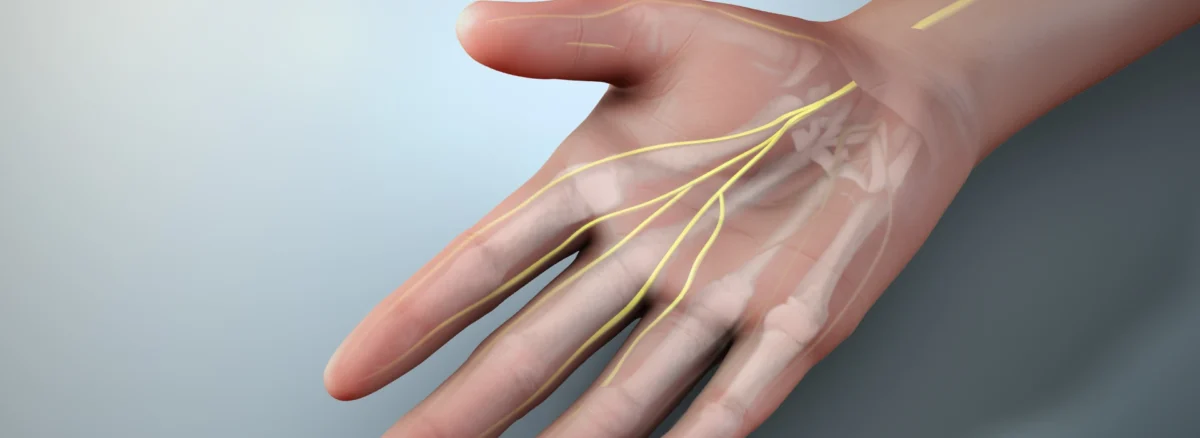If you are among those people who spend a lot of time doing activities that require forceful or repetitive wrist movements or the use of vibrating equipment, you are more likely to have nerve compression in the wrist. Some common examples of these activities are driving, knitting, working with small instruments, and sanding. Nerve compression in the wrist is also called carpal tunnel syndrome.
Pain, muscle weakness, and numbness are common symptoms of carpal tunnel syndrome. Early diagnosis and treatment are critical because nerve compression in the wrist usually worsens with time in the majority of cases. You can lower your risk, as well as any existing hand pain or weakness, by following some simple actions. So, in this article, I am going to tell you the simple methods to prevent nerve compression in the wrist. But, before that, let’s see the common causes of nerve compression in the wrist.
Causes Of Nerve Compression In Wrist
In the majority of cases, nerve compression in the wrist is caused by a combination of factors. According to some studies, women and the elderly are more likely to develop this disease. Some other variables that can cause carpal tunnel syndrome include:
Heredity
Heredity is most certainly a significant factor. The carpal tunnel may be smaller in some people, or anatomic abnormalities may affect the amount of space available for the nerve, and these characteristics can run in families.
Repetitive Use Of The Hand
Repeating activities that require a lot of flexion or extension of the hand and wrist can disturb the tendons in the wrist, resulting in swelling and pressure on the nerve.
Illness
Carpal tunnel syndrome is also linked to illnesses such as diabetes, rheumatoid arthritis, and thyroid gland imbalance. Pregnancy can also cause swelling due to hormonal changes.
Methods To Prevent Nerve Compression In Wrist
Stop Exerting Extra Force
We grow so used to doing things a specific way in our everyday routines that we don’t even notice it. You may use more force than necessary to complete the task. For example, you might hold your equipment too tightly when a solid grip is sufficient, or you might strike your computer keyboard hard, which is unnecessary. So, always think before applying excessive force. You will surely reduce your chances of having carpal tunnel syndrome if you stop exerting extra force when doing simple things.
Stay Neutral
Avoid bending your wrist all the way up or down if possible. The pressure on your median nerve is relieved by keeping your wrist in a straight, neutral position.
Take Regular Breaks
Try to take breaks from your work to stretch or rest your hands. In every one and a half hours, take a 10 to 20-minute rest. This is especially important if you work with items that vibrate or need you to exert a lot of power.
Wear Wrist Splints
Wear wrist splints for relief if you have carpal tunnel symptoms. The carpal tunnel nerve is relieved by keeping your wrist in a straight or neutral position. These splints should not be used for an extended period of time. However, using them while sleeping can help you manage nerve compression in your wrist over time.
Try To Switch
Make an effort to avoid repeating the same hand and wrist actions. For example, if you usually do something that requires a lot of force with your left hand, try doing it with your right hand. Moreover, use both hands in turns as much as possible to give your muscles a rest.
Stay Warm
It may appear easy, yet it makes a significant difference. Pain and stiffness worsen when you’re cold. Try to wear gloves. Even fingerless gloves can be beneficial since they keep your hands and wrists warm and loose.
Change Lifestyle
Symptoms may be improved by avoiding painful movements, implementing ergonomic solutions at work and at home, or altering job responsibilities. Losing weight can help relieve symptoms of nerve compression syndrome when obesity is the cause.
Consult A Doctor
Consult a doctor as soon as possible if nerve compression in the wrist is unbearable or has started affecting your ability to work. Your symptoms will be evaluated by a doctor. A physical examination and diagnostic tests may be used by the doctor to diagnose nerve compression syndrome. The following are some of the tests used to diagnose
nerve compression syndrome:
- Nerve conduction tests
- Electromyography
- Ultrasound
- MRI
However, diagnostic tests aren’t always necessary for carpal tunnel syndrome. Still, they may provide helpful information about the location and severity of the compression.
Click here to contact for more information


